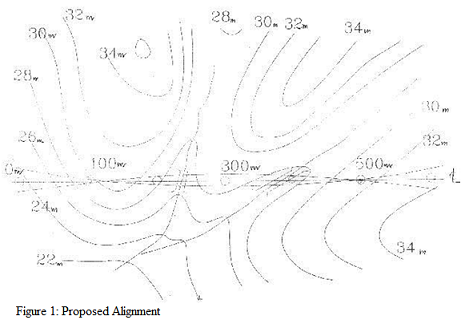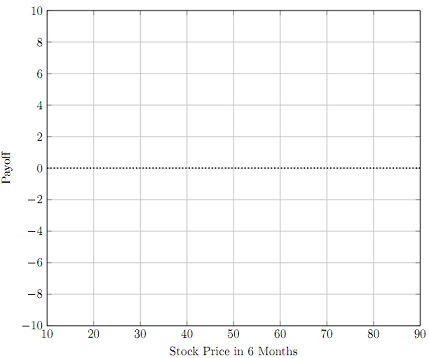Reference no: EM131395275
Drainage Design Assignment
The main access to a large rural farming community in a developing country is provided by an engineered earth road. However this is often subjected to flooding and impassability which prevents access during several months of the year, making the community vulnerable and isolated. Costs of significant agricultural production in the area are also correspondingly affected. As a result the government is set to upgrade the road to an all season road.
Your organisation has been invited to undertake studies to determine a suitable drainage scheme for the new road. You are also required to provide an indication of the new road's geometrical design and some calculations associated with a suitable pavement structural design.
Available Data
The information provided to you is of low quality, and so will need to state clearly any assumptions you make.
1. The existing road is an engineered earth road
2. The new all season road is expected to carry 1.5 million standard axles over its design life (10 years).
3. Possible horizontal alignments are shown on logographical maps (Figure 1 and Figure 2). Select one of these or provide justification for an alternative.
4. The horizontal curve is 1500 metres in radius with a 3% crossfall
5. Topographic maps (of low quality) shown in Figure 1 and Figure 2
6. The nature of the surface soils is silty clay with light natural vegetation covering. Any imported material will be sandy clay. Subgrade CBR's are 12% and 18% respectively un-soaked and 4% and 8% soaked.
7. The road surface is to receive a thin bituminous surface overlying a base and sub-base, characteristics of which are to be recommended by this study.
8. The sealed pavement width is 7.4 metres plus two 1.8 metre unsealed shoulders which comprise of crushed stone.
9. Run off and stream flow is as follows:
- Run off from the verge - calculate using the shown catchment areas
- Run off from the road - calculate using 'i' of 75 mm/hr for 1 in 5 year and 95 mm/hr for 1 in 10.
- Stream flow at chain age 240 metres - 8 m3/sec (1 in 10 yr flow)
- Stream flow at chain age 390 metres - 23 m3/sec (1 in 10 yr flow)
- 5 m3/sec dry season flow.
10. When determining the coefficients of run off for the various surfaces you need to bear in mind that although future land use for the catchment area are undecided, housing development in the vicinity of the new alignment should be considered.


Design Steps
i) Choose a vertical alignment for your horizontal alignment so that it contains some cutting and some fill sections tying into the existing grades at the ends of the project (given in some cases). A flood crossing is to be considered for the crossing at 390 metres.
ii) Provide a pavement design solution. You may use an analytical design approach or utilize (with appropriate justification) existing empirically founded catalogue methods.
iii) Establish typical cross sections of the road for cuts, fills and culvert/flood crossings. Indicate cross falls, side slopes, back slopes and any necessary drain facilities. The position and direction of the longitudinal drainage can be shown schematically on a plan for run off determination. Off road catchments for local drainage are to be calculated. The initial designs can be changed or modified later after more detailed design. Assume that the slopes will be resistant to slip but not necessarily surface erosion.

iv) Design hydraulic drainage treatments which have the capacity to cater for each of these discharges. Apart from a piped system for the village and the culvert or flood crossing, you have options in the type of drainage facility that can be provided, e.g. open or closed side drains, kerbed or un-kerbed paved carriageway.
v) Velocity of flow and rainfall impact may also be an important design parameter. Make appropriate checks. Protection works may be needed, e.g. at the outlet to the culvert.
|
Substitute or complement for good
: If your demand for some good x is X=0.3 I/Px a) is X a normal or inferior good? Show me how you know. b) is good Y a substitute or complement for good X? Again, show me how you know.
|
|
Analyze the major threats to mobile devices
: CIS 502:Analyze the major threats to mobile devices, and suggest at least two (2) methods to mitigate the concerns and make the devices more secure from an organizational standpoint. hwacer.com.Analyze the emerging security threats presented within..
|
|
Create a new method named createstars
: In class Space, create a new method named createStars. This method should have one parameter of type int, named number, to specify the number of stars it should create. It has no return value. The method body should-for now-be empty
|
|
Provide the name of the psychology topic the video relate
: The PSY 3000 Video Summary is designed to give the student an opportunity to summarize the weekly video(s). Provide the name of the psychology topic the video(s) relate(s) to. The Video Summary is to be turned in using the link in Class Folders in ..
|
|
Determine a suitable drainage scheme for the new road
: Choose a vertical alignment for your horizontal alignment so that it contains some cutting and some fill sections tying into the existing grades at the ends of the project. A flood crossing is to be considered for the crossing at 390 metres. Provi..
|
|
Implement the body of the createstars method
: In the body of the loop, generate random x and y coordinates. Set the color to white and then paint a filled oval with a width and height of two pixels.
|
|
Which areas do you feel are most effective within culture
: Which areas do you feel are most effective within the Culture? Explain why you have come to these conclusions. You have to create a thread of not less than 350 words
|
|
Discuss about the cost estimates for project resources
: write a 1-page summary document explaining any relevant facts about the project duration, number or type of resources, critical task sequencing, or how duration estimates were arrived at, and any financial implications (for example, budget or cost..
|
|
Record the number of observations in the subsample
: ECON 15A- Record the number of observations in the subsample. Create standardizations (z-scores) of variables: hours. Display the resulting "histograms and statistics" (from Eviews) next to those for unstandardized versions.
|